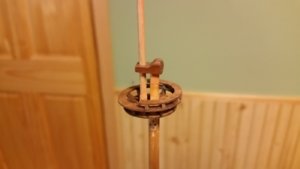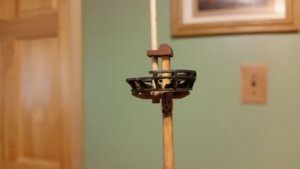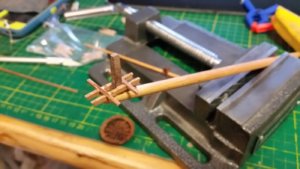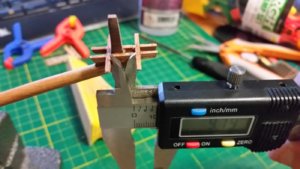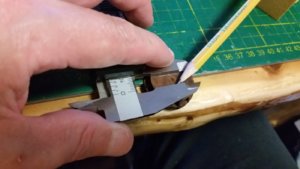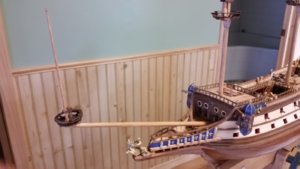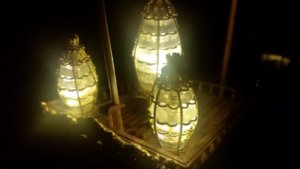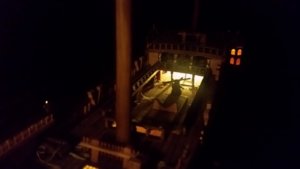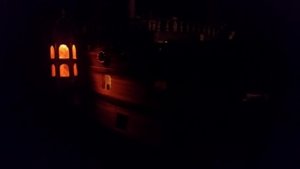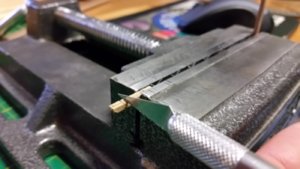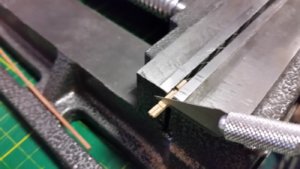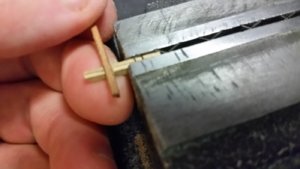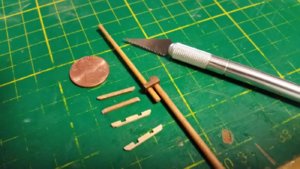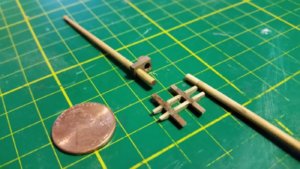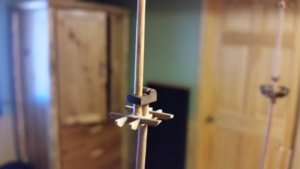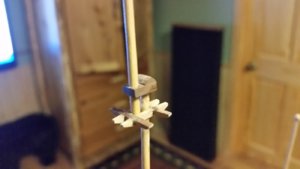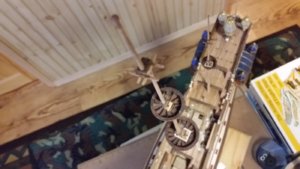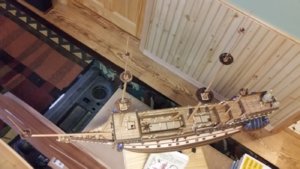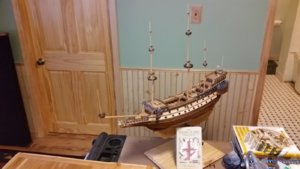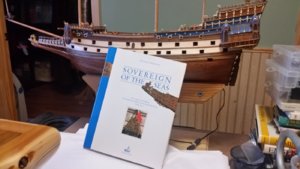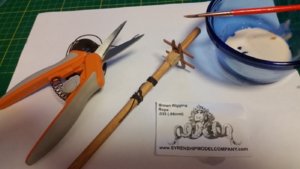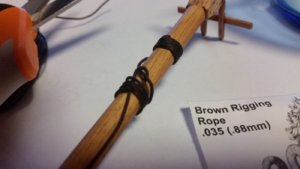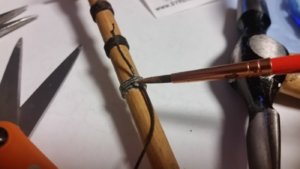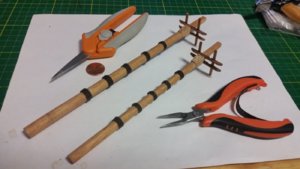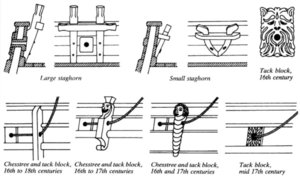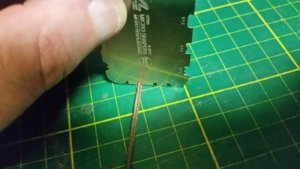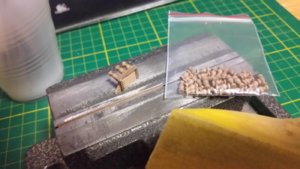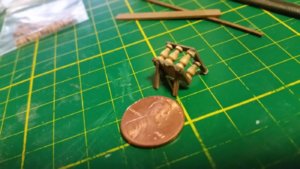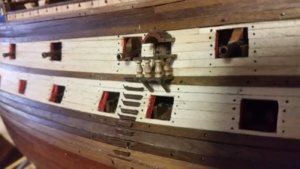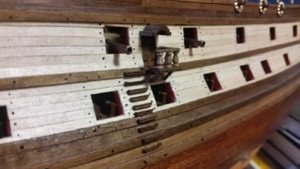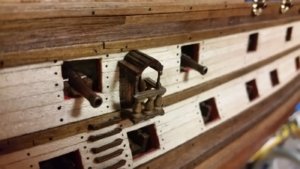Work continues on the mast assemblies. The top assemblies for mizzen, main, and fore topmasts were completed in that order, and everything is assembled loose to see how the overall progress is going. The sprit topmast trestle-trees and top are next, then the topgallant trestle-trees for the other masts. The flag staves at the top of the fore, main, and mizzen masts were made, and the caps and flag staves fitted to the topgallant masts. Oops...  I just noticed that the cap on the for topmast is too low. I'll have to patch that by expending the topmast with a squared length of wood and raise it 7mm more to its proper height. Easy fix. No one will notice...
I just noticed that the cap on the for topmast is too low. I'll have to patch that by expending the topmast with a squared length of wood and raise it 7mm more to its proper height. Easy fix. No one will notice... 
While I'm at it, I'll replace the cheeks on the main topmast. They appear too small.
Mizzen Top
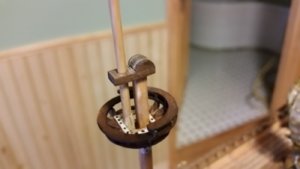
Start main topmast top assembly.
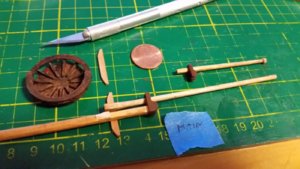
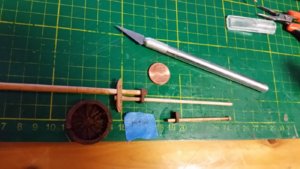
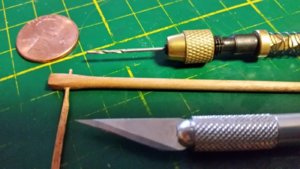
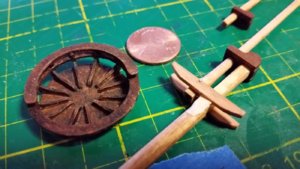
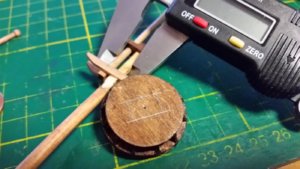
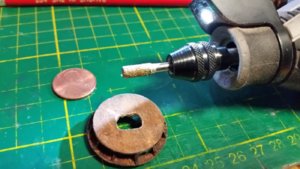
Assembly fore topmast top assembly in similar fashion.
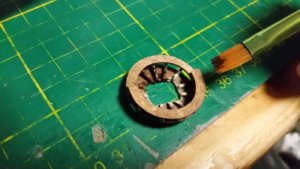
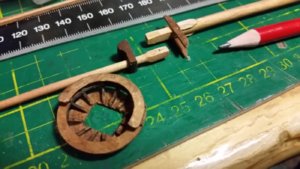
All top assemblies except the sprit assembly fitted together.
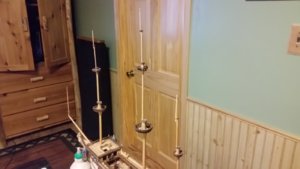
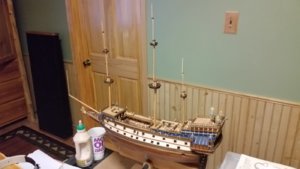
While I'm at it, I'll replace the cheeks on the main topmast. They appear too small.
Mizzen Top

Start main topmast top assembly.






Assembly fore topmast top assembly in similar fashion.


All top assemblies except the sprit assembly fitted together.


Last edited:



